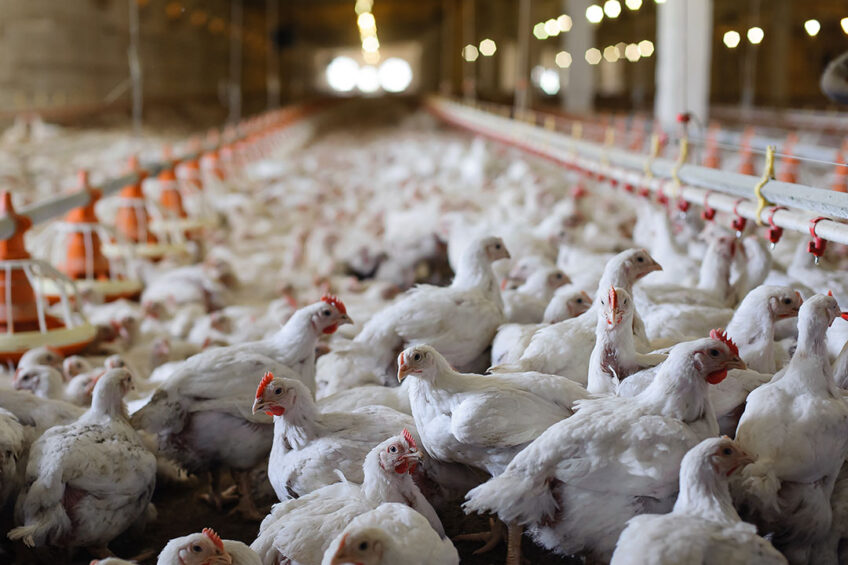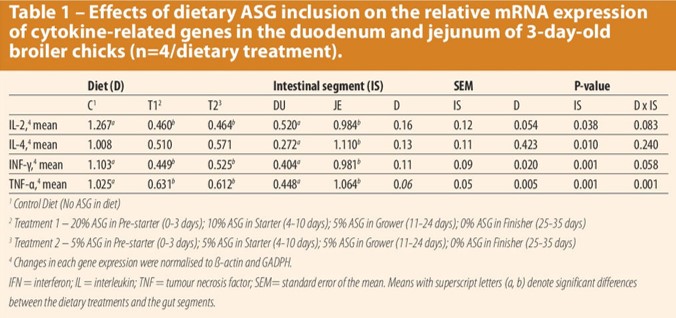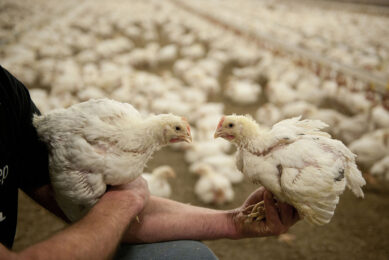Early experience, gene expression and lifelong consequences of broilers

Extensive studies of early post-hatch feeding demonstrates its substantial impact on lifetime performance in commercial broilers. Excellent nutrition in this phase is shown to enhance growth rates and increase the proportion of breast muscle up to market age. But what are the mechanisms behind this improvement and, more importantly, how can we take advantage of them?
The chicken has 39 chromosomes containing 20,000-23,000 protein coding genes which serve to make up the specific characteristics of that animal. Unfortunately, not every gene behaves as it was designed to and environmental and nutritional experiences can leave a chemical signature which determines whether and how the genes are expressed. This collection of chemical markers is known as the ‘epigenome’.
Epigenetics
The epigenome can be affected by positive and negative experiences (correct temperature or fluctuations; good/poor hygiene; quality feed/anti-nutritional factors, etc.) which leave a unique ‘signature’ on the genes. This signature can temporarily or permanently affect how easily genes are switched on or off and epigenetic modification typically occurs in cells that form part of organ systems, consequently influencing their development and function. Changes to the epigenome in early life, when specialised organs such as the gut, heart or lungs are developing, therefore, can have a significant impact on lifetime health and performance.
A positive early experience
For commercial units this means we can help birds to perform better by giving them a positive early experience in their growing environment. Such a concept could also be used to help birds overcome other complex problems. However, the faster growth, feed efficiency and improved meat quality that make the industry successful today have not been without a price.
Scientists have discovered that production traits may be closely linked with immune traits, meaning that growth, feed efficiency and meat quality may also be associated with compromised health or a challenge to the broiler’s immune system. Compromising the animal’s immune system at any stage may lead to increases in metabolic disorders, reduced resistance to infection and higher mortality.
Balance
The broiler’s intestine is complex and its health is crucial in maximising performance. Gut health is about the balance between diet, proper digestion/absorption, stable and beneficial microbiota and the effective immune status of the gut. Nutrients provide energy to organs and tissues but also supply crucial substances for the production of tight junction proteins, mucins, chemokines and cytokines – all essential components of the bird’s immune system. Cytokines are a group of soluble proteic or peptidic mediators produced by an animal’s cells to modify the behaviour of other cells and thus play a key role in immune and inflammatory processes.
Pathological and physiological inflammation
Scientists highlight 2 types of inflammation: pathological (classical) and physiological. The industry is familiar with gut pathological inflammation and its consequences (low feed intake, weight loss, low feed efficiency and uniformity, etc.) but physiological inflammation is widely underestimated.
Even under homeostatic conditions, the gut is continually exposed to a multitude of exogenous antigenic, dietary and toxic stimuli, in addition to endogenous stimuli (bacterial-derived metabolites and components). This may result in low-grade stimulation of the innate immune system which is continuously regulated and contained to prevent intestinal damage, and this controlled inflammatory response has been defined as ‘physiological inflammation’.
A physiological inflammation may turn into a pathological inflammation…
Imbalanced nutrition can break the intestinal homeostasis of the animal, causing uncontrolled and chronic inflammation, and birds may use their energy in unnecessary biosynthesis, so compromising efficiency. However, interactions between nutrients and gut immunity is not limited to intestinal cells and eventually will affect the systemic homeostasis that is responsible for the entire body, thus affecting growth and performance.
A physiological inflammation may even turn into a pathological inflammation if not managed correctly. To return to physiological homeostasis: inflammation relies on signalling pathways induced by innate immune receptors, with pro-inflammatory cytokines involved in an induced immune response in animals. This response is stimulated by macrophages, following activation by bacterial infection, toxins, tissue injury or even excessive nutrients and metabolites.
Research
A trial at the University of Turin, Italy studied the expression of intestinal inflammatory cytokines in 3-day-old broiler chickens. The results (Table 1) suggest that the dietary inclusion of Alphasoy Gold (ASG) in the first 3 days of life will down-regulate IFN-γ, TNF- α and IL-2, while it won’t change the expression of IL4 in the gut of broiler chicks. The IFN-γ, TNF- α and IL-2 are all defined as pro-inflammatory cytokines as they trigger inflammation.
 Conversely, IL-4 is an anti-inflammatory cytokine which promotes T-helper 2 lymphocyte development and inhibits the synthesis of lipopolysaccharide-induced pro-inflammatory cytokines. The significant down-regulation of pro-inflammatory cytokines with no impact on IL-4 expression in this experiment can be considered as a unique epigenetic ‘signature’ in the animal’s very early stage of life with a possible positive lifelong effect.
Conversely, IL-4 is an anti-inflammatory cytokine which promotes T-helper 2 lymphocyte development and inhibits the synthesis of lipopolysaccharide-induced pro-inflammatory cytokines. The significant down-regulation of pro-inflammatory cytokines with no impact on IL-4 expression in this experiment can be considered as a unique epigenetic ‘signature’ in the animal’s very early stage of life with a possible positive lifelong effect.
Alphasoy Gold (ASG) is a highly digestible and consistent functional ingredient for young poultry chicks, designed and manufactured by AB-Neo. The unique thermo-mechanical and enzyme-facilitated production process considerably reduces resistant protein and increases fast-digestible protein, thus improving protein digestion kinetics in the gut. Additionally, the soybean meal carbohydrate profile is altered in the ASG process, unlocking around 16% more energy (compared to standard SBM), while the bio-active components support the development of an optimum gut environment by creating good conditions for the effective digestion and absorption of nutrients, as well as uniquely modulating the bird’s immune system.
Join 31,000+ subscribers
Subscribe to our newsletter to stay updated about all the need-to-know content in the poultry sector, three times a week. Beheer
Beheer


 WP Admin
WP Admin  Bewerk bericht
Bewerk bericht